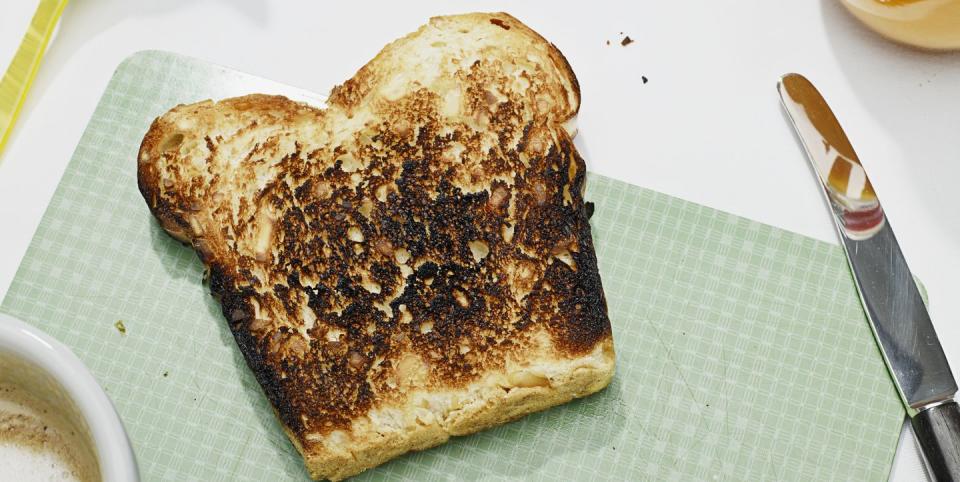Is burnt food unhealthy?

A few trendy exceptions aside – here’s looking at you, charred kale – burning food isn’t going to win you many culinary admirers. But is it dangerous? The answer, it seems, is complicated.
Burnt food has been linked to an increased risk of ovarian, kidney and endometrial cancer due to its increased levels of acrylamide, a chemical the WHO listed as a “possible” risk to human health. The International Agency for Research on Cancer also classifies acrylamide as a “probable human carcinogen’.
But the relationship is far from clear, with Cancer Research stating on its website that ‘acrylamide from burnt toast, burnt chips, or crispy potatoes is unlikely to increase the risk of cancer'.
Nutritionist Ania Mason (kim-pearson.com) still believes it’s best to exercise caution. ‘Starchy foods such as grains, potatoes and other root vegetables cooked at high temperatures will all contain certain amounts of acrylamide – a possible carcinogen and neurotoxin,’ she says. ‘Tolerable levels are difficult to quantify, but we need to be mindful about the risks and potentially choose others options whenever possible.’
One solution is to go low and slow. ‘Slow cooked soups, stews and casseroles packed full of different coloured vegetables are a perfect solution for cooler months,’ she says.
Ultimately, though, most experts agree that the important thing is to eat a healthy diet full of fruit, veg, healthy proteins and wholegrains. Do that, and you won’t need to sweat the odd burnt potato.
Boiling points
Here’s an easy way to reduce the risk that burnt food may present: boil food instead of frying, baking or grilling it. Since water boils at 100C, it doesn’t reach high enough temperatures to produce large amounts of acrylamide.
The golden rule
For a simple visual method to judge the acrylamide levels in your food, follow the “golden rule”– cook food until it’s a shade of yellowy-brown or golden, rather than char it until it’s dark brown or black.
Low and slow
The amount of acrylamide produced increases significantly at temperatures hotter than 140C. Turning down your oven and embrace ‘low and slow’ cooking.
You Might Also Like

 Yahoo Finance
Yahoo Finance 